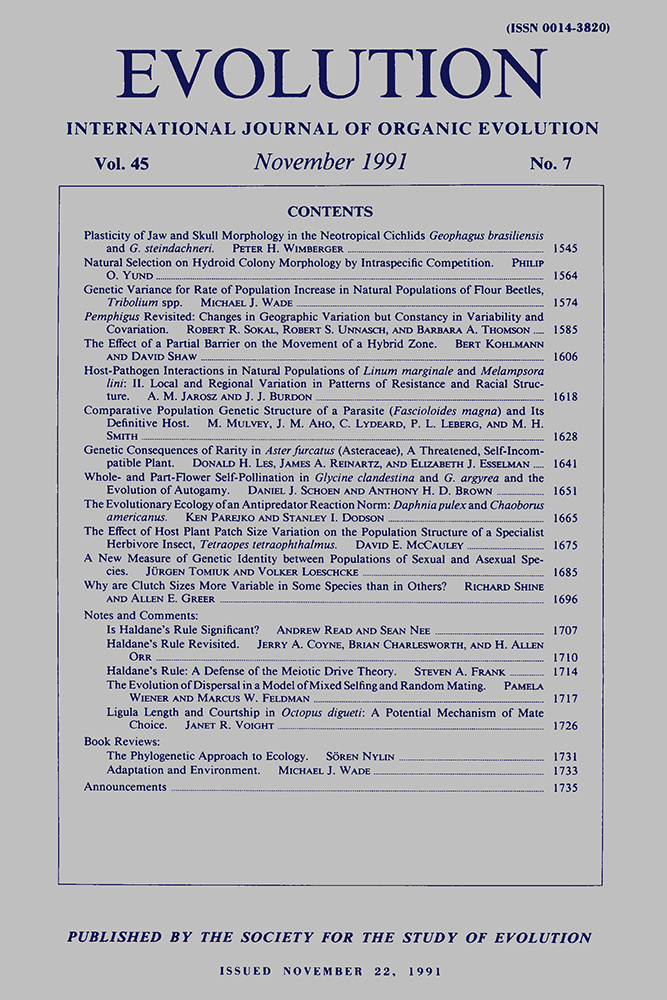HOST-PATHOGEN INTERACTIONS IN NATURAL POPULATIONS OF LINUM MARGINALE AND MELAMPSORA LINI: II. LOCAL AND REGIONAL VARIATION IN PATTERNS OF RESISTANCE AND RACIAL STRUCTURE
Abstract
Spatial variation in the resistance structure of Linum marginale (wild flax) populations to the rust fungus Melampsora lini, and in the racial structure of this pathogen, was investigated by sampling 10 populations distributed throughout the Kosciusko National Park, New South Wales, Australia. Considerable differences were found among populations in the structure of both host and pathogen. Host populations were divided into three broad categories: (1) populations susceptible to all testing races; (2) populations containing a strictly limited number of resistant phenotypes; and (3) populations with a considerable diversity of resistant phenotypes. The pathogen populations also showed a range of diversity. The major differences between these populations were determined by the occurrence and frequency of four common races of pathogen (races A, E, K, and N). These differences were apparent both at a regional spatial scale (over the 100 km separation of the most distant populations) and at a local scale where major differences were detected between two populations only 300 m apart. The distribution of the four common races of M. lini was consistent with the hypothesis that a fitness cost was associated with unnecessary virulence. In general, however, differences in the structure of pathogen populations from genetically very similar host populations implied that, in addition to host resistance genes, other evolutionary forces are also important in determining the genetic structure of individual pathogen populations.




